This is something that only needs to be done once or twice a year depending on how much you are playing. Again if your manufacturer suggest differently then follow manufacturer guidelines.
Supply List
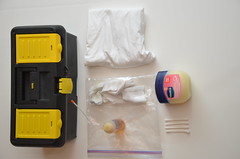 |
| Supplies |
Oil
I bought lubricating oil from Carter when I bought my first guitar over 3 years ago and I still have enough to last me for a while. You can also use sewing machine oil.
DO NOT USE WD-40 OR SIMILAR AS IT WILL GUM UP EVERYTHING.
Oil bottle
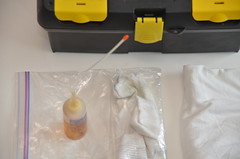 |
| Oil |
You need a bottle with a long tube in the neck so you can get into the nooks and crannies of the mechanical parts.
Baggie
I put my oil lubricant in a baggie to keep the oil from leaking onto anything.
Vaseline
This is used to lubricate the threads on your legs and the ball joints where the pedals attach to the rods.
Rag
No explanation needed here.
Qtips (3 or 4 will do)
Used for the vaseline.
Process
1. You can do this in whatever order you desire but I always start with the vaseline. Using a Qtip, put some vaseline on the qtip and apply the vaseline to the the threads on each of the four legs.
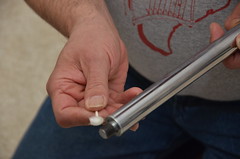 |
| Vaseline the threads |
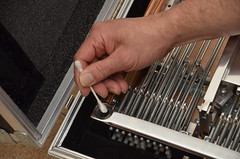 |
| Vaseline here too |
2. Vaseline each of the ball joints on the pedals. Little dab will do ya.
 |
| Vaseline here too. Just a dab |
3. When you first open your case with the guitar face down in the case you want to lubricate all of the moving joints and springs. Just a drop or two. You also want to lubricate the connecting points of each pedal rod on the guitar side. There are probably 30 or so lubrication points on your guitar. You do not want to over lubricate. Try to not get oil on the wood of your guitar and wipe it up as much as possible.
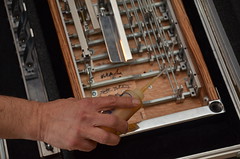 |
| Lubricate all moving joints |
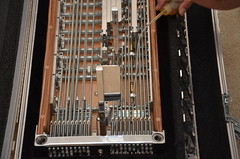 |
| Lubricate springs |
4. Wipe up excess oil.
5. Put away supplies.
Note: If you see metal shavings around any of the threads or other metal attachments then you need to lubricate.
Give me some feedback if this is useful or more information is needed.
Hi, I do think this is a great site. you are familiar to repair steel guitar and i have a question to ask you!my new guitar pedal can not play wonderful sound but i do not know how to adjust it,can you do me a favor to give me some tips about that?waiting for your reply?thanks!
ReplyDeleteI am not sure what you are asking. The quality of the sound you get out of your guitar can be influenced by many factors. The main factor will be pickups. The choice of amplifier will greatly impact the sound you get. If you are getting a scratchy sound as you apply the volume pedal then I would look at the rheostat. Usually you can only replace the rheostat. I have not used higher end volume pedals so I am unfamiliar with adjustments that would impact sound. Since your volume pedal is new then I would surmise either a faulty pedal. Trouble shooting I would suggest is replace all cables at the same time first. The cable between guitar and pedal and the cable between pedal and amp. If that does not solve your problem borrow a friends pedal and try that. If that does not solve your problem then try a different amp. If your using a tube amp then check your tubes. I know it is a pain but this is the only way I know to trace your problem. Good luck and let me know your solution.
Delete